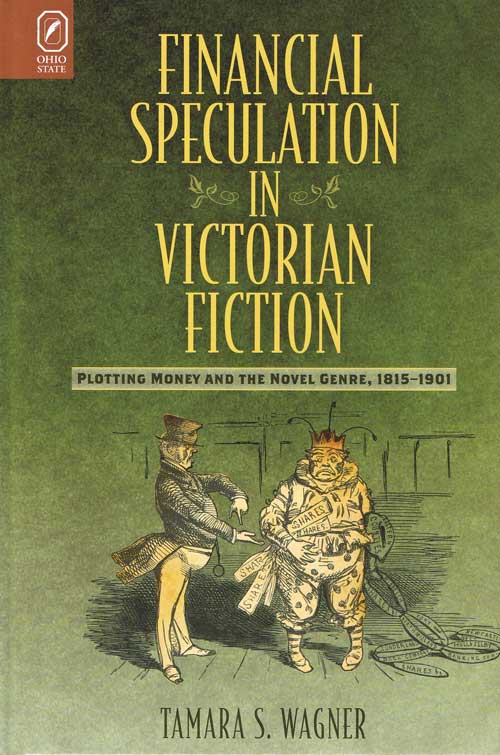Financial Speculation in Victorian FictionPlotting Money and the Novel Genre, 1815–1901Tamara S. Wagner |
 1/6/2010 Literary Criticism/European/English 256 pp. 6x9  $44.95 cloth 978-0-8142-1119-9 Add cloth to shopping cart $14.95 CD 978-0-8142-9217-4 Add CD to shopping cart Shopping Cart Instructions Review/Change Shopping Cart & Check-out | |||
| Table of Contents |
“the definitive critical study of financial plots in Victorian fiction” —Victorian Studies “Financial Speculation in Victorian Fiction is a welcome addition to the current economic criticism occurring in literary studies; it covers different ground than Poovey, Woodmansee, and Brantlinger do while also acknowledging and engaging with them. The addition of so many lesser-known novels shows how widespread the stock market motif is in Victorian fiction and also helps to fully place the more canonical novels in that tradition.” —Gail Turley Houston, professor of English and director of women’s studies, University of New Mexico “Tamara S. Wagner’s study is sound and well-researched, exploring an aspect of Victorian literature that has been studied, but not in this detail and with this particular slant. Her work brings forward a number of mostly forgotten texts that might have little literary merit, but provide insight into Victorian attitudes, especially to ways of accumulating wealth and the morality associated with that accumulation.” —John R. Reed, Distinguished Professor of English, Wayne State University In Financial Speculation in Victorian Fiction: Plotting Money and the Novel Genre, 1815–1901, Tamara S. Wagner explores the ways in which financial speculation was imagined and turned into narratives in Victorian Britain. Since there clearly was much more to literature’s use of the stock market than a mere reflection of contemporary economic crises alone, a much-needed reappraisal of the Victorians’ fascination with extended fiscal plots and metaphors also asks for a close reading of the ways in which this fascination remodeled the novel genre. It was not merely that interchanges between literary productions and the credit economy’s new instruments became self-consciously worked into fiction. Financial uncertainties functioned as an expression of indeterminacy and inscrutability, of an encompassing sense of instability. Bringing together canonical and still rarely discussed texts, this study analyzes the making and adaptation of specific motifs, of variously adapted tropes, extended metaphors, and recurring figures, including their transformation of a series of crises into narratives. Since these crises were often personal and emotional as well as financial, the new plots of speculation described maps of some of the major themes of nineteenth-century literature. These maps led across overlapping categories of literary culture, generating zones of intersection between otherwise markedly different subgenres that ranged from silver-fork fiction to the surprisingly protean versions of the sensation novel’s domestic Gothic. Financial plots fascinatingly operated as the intersecting points in these overlapping developments, compelling a reconsideration of literary form. Tamara S. Wagner (website) is associate professor of English literature at Nanyang Technological University in Singapore. | |||

